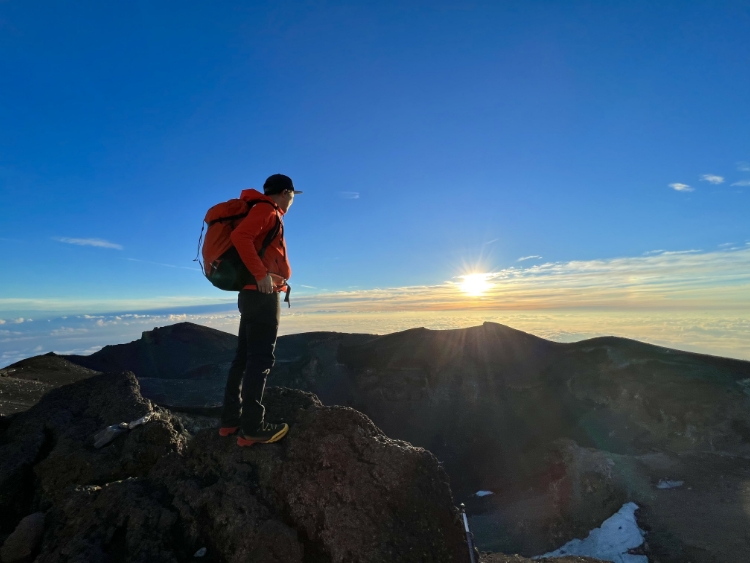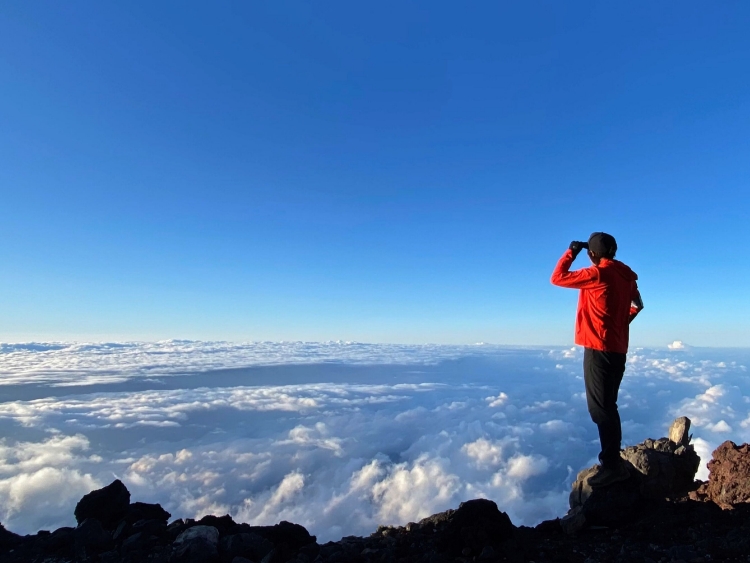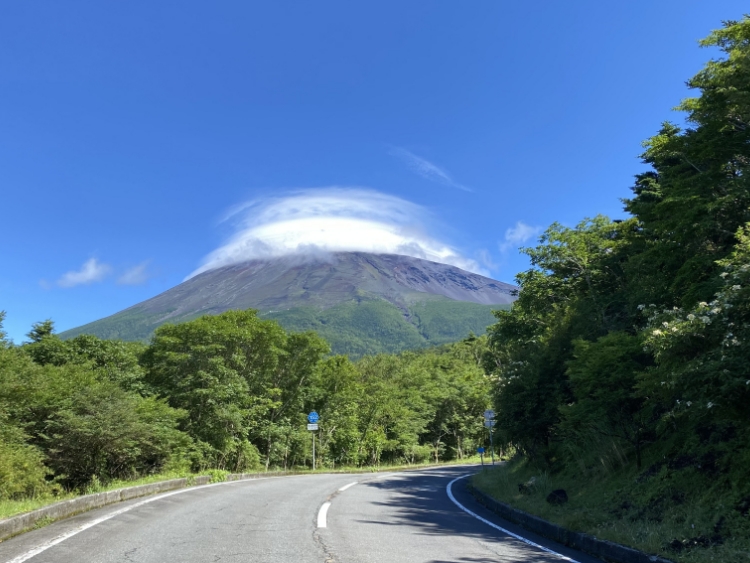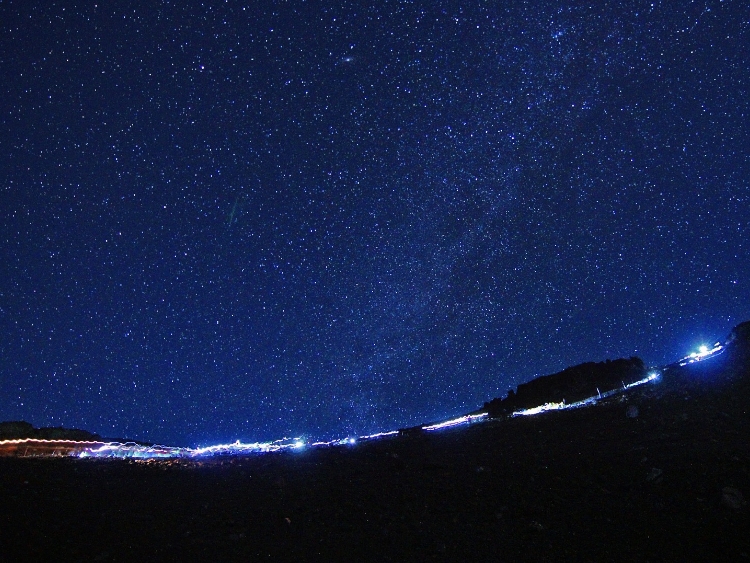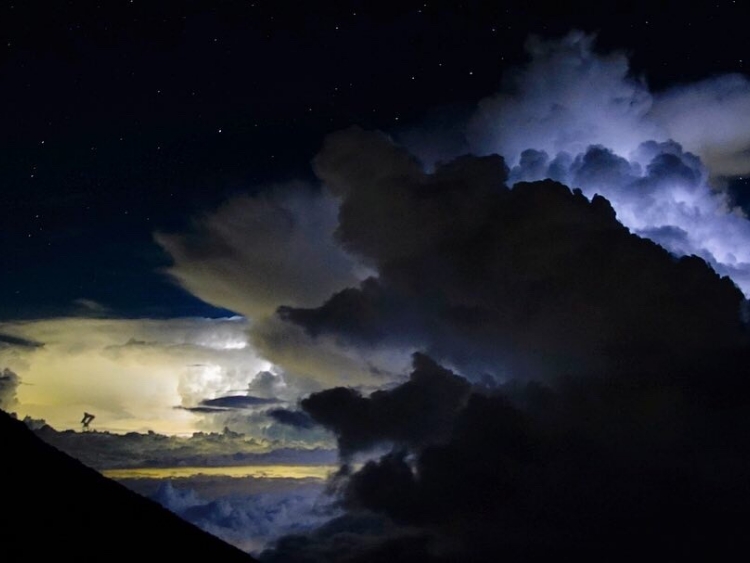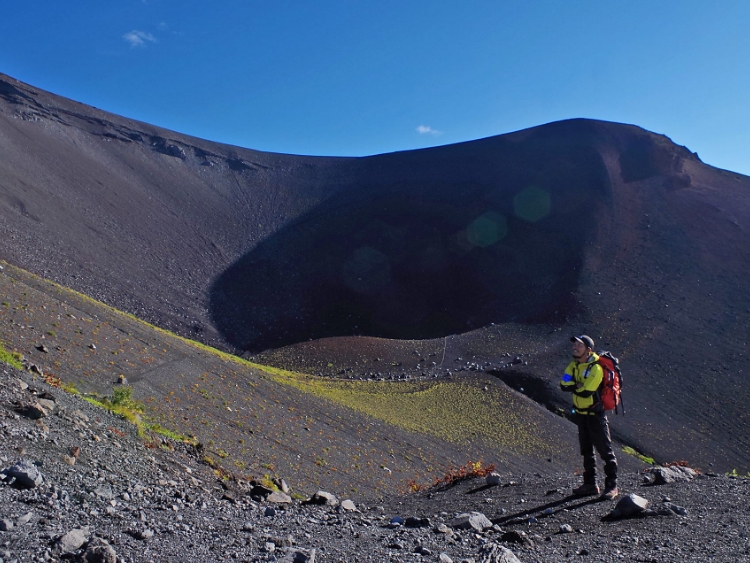Professionals tweets
- Home
- Tweets from professionals
- Shunsuke Mizumoto
How would you describe Imafuji in one phrase?
Mt. Fuji Weather concierge! It’s trustworthy with the weather!
- Representative of the Fujinomiya Guide Association
- Mountaineering Guide / Photographer
Mr.Shunsuke Mizumoto
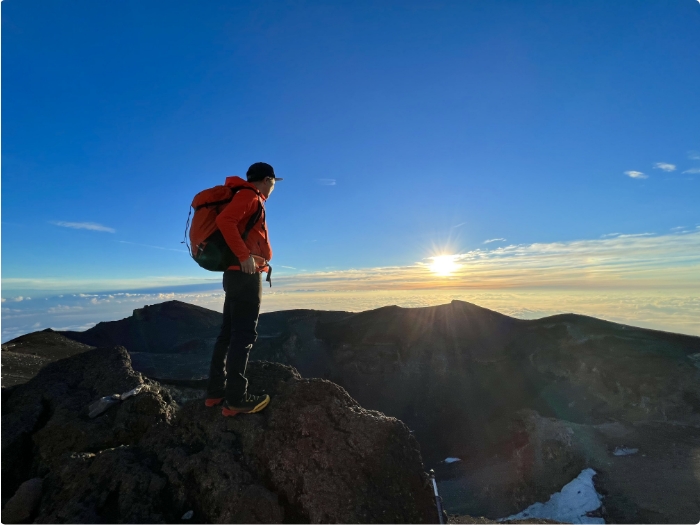
How do you use Imafuji?
As mountain guides, we have the significant responsibility of ensuring the safety of climbers. The ability to monitor Mt. Fuji's weather in real-time offers a substantial advantage in managing the climb and guaranteeing safety. Currently, various weather forecasting services for Mt. Fuji provide forecasts ranging from one to six hours ahead, which can be somewhat useful. However, the weather on Mt. Fuji in the summer can change within minutes or tens of minutes, often bringing unexpected rainfall or strong winds.
Our weather predictions for the mountain start with observing the atmospheric conditions surrounding Mt. Fuji as we make our way to the fifth station. By combining this with pre-checked data and materials, our own visual observations, our experience, and traditional weather prediction methods, we can greatly enhance our ability to accurately predict the weather. The real-time data provided by IMAFUJI allows us to further quantify and refine our understanding, significantly improving our capability to anticipate future weather conditions while on the mountain.
How would you describe Imafuji in one phrase?
Mt. Fuji Weather concierge!
It’s trustworthy with the weather!
Why is this important and necessary?
Weather plays a crucial role in the activity of mountaineering. Even when considering a single mountain like Mt. Fuji, the weather can differ between the north side (Yamanashi Prefecture) and the south side (Shizuoka Prefecture). Under stable and clear conditions, these differences might not be significant. However, when bad weather approaches, it becomes vital to know where the rain or thunder clouds are coming from and where they are heading, how long the bad weather will last, and from which direction and at what speed the wind will blow. Having this relative information is essential to avoid weather-related accidents.
There can be a significant difference between those who only check the weather forecast before starting their climb and those who monitor it continuously while climbing. In extreme cases, this difference can mean getting soaked by rain or staying dry.
Despite being summer, temperatures on Mt. Fuji can often drop to levels similar to autumn or winter. One common cause of hypothermia during a Fuji climb is "wind chill." Therefore, it is essential to check wind speed as well as temperature. You can estimate the perceived temperature by subtracting wind speed from the actual temperature, which helps determine the appropriate level and timing of protective clothing to avoid hypothermia.
Misjudging the weather on Mt. Fuji can sometimes be fatal. It's crucial to recognize that the weather forecast and conditions on Mt. Fuji can be quite different from those in the familiar "lower world."
In summary, understanding and monitoring the weather is vital when climbing Mt. Fuji. Weather conditions can vary significantly between different sides of the mountain and can change rapidly, especially when transitioning to bad weather. Real-time weather updates can make a substantial difference in safety. Additionally, being prepared for temperature drops and strong winds can help prevent hypothermia. Recognizing that Mt. Fuji's weather can differ from lower-altitude forecasts is essential for a safe and enjoyable climb.
What would you like to say to the climbers?
Climbing Mt. Fuji in the summer attracts a diverse group of climbers, from first timers to seasoned veterans, each with their own reasons for taking on the mountain. As a mountain guide, I want to convey that instead of approaching the climb with a mindset of "conquering Mt. Fuji", it's better to think of it as "being embraced by Mt. Fuji". This perspective helps you be more tolerant of the various challenges and difficulties that inevitably arise during the climb.
Mt. Fuji is a mountain that tests you in many ways as you ascend. Physical exhaustion, mental strain, weather changes, and technical difficulties can all take their toll and disrupt your plans. Approaching the climb with a gentle and open attitude allows you to better handle these challenges.
When climbing Mt. Fuji, you'll be carrying a heavy load on your back, but there's one more thing I'd like you to bring along: compassion. Remember that everyone around you is likely facing their own physical and mental struggles. When you encounter fellow climbers going uphill, think of them as "tomorrow's you," and when you are descending, those you see, think of them as "yesterday's you." Having this sense of empathy and willingness to help each other enhances the experience for everyone and contributes to the beauty of Mt. Fuji.
By approaching the climb with this mindset, you create a more positive and supportive environment, making the journey up Mt. Fuji a more fulfilling and enriching experience for all.
What do you like about Mt. Fuji
When in Japan Mt. Fuji is the closest you can get to space, so on nights with good conditions, you can feel like you can reach out and touch the summer constellations and the Milky Way spread across the sky. It’s a place where you can not only get a bird’s-eye view of Japan but also feel the reality of Earth and space.
Additionally, the fact that Mt. Fuji is an active volcano and its sheer size evoke a sense of awe that you can’t experience in daily life.
As a mountain guide, I often witness the "human" side of the many people who come to climb Mt. Fuji with various motivations and goals. I see tears of emotion, achievement, cooperation, defeat, and realization—moments when people break out of their everyday shells and reveal glimpses of their life stories. This is one of the most captivating aspects of being involved with Mt. Fuji.
Mt. Fuji is filled with situations that allow you to experience the extraordinary. Being able to touch the colorful life stories of the people I meet on their Mt. Fuji climbs, seeing landscapes that seem like the work of gods, and having countless unbelievable experiences have all become addictive for me. I’ve been hooked on the allure of Mt. Fuji for over ten years.
What’s the best thing about Imafuji?
IMAFUJI is an ongoing project that visualizes Mt. Fuji from various angles. It’s hard to pinpoint just one standout feature, but the ability to check real-time weather data for each of the main routes up Mt. Fuji is certainly one of its highlights.
The observation data available from IMAFUJI provides a wealth of useful information for climbers. This includes effective pacing, frequency of hydration, clothing adjustments, and alerts for the most dangerous hazard on the mountain—lightning. During the climbing season, even if you don’t climb Mt. Fuji, you can enjoy views from Japan’s highest point via an incredible 360°-sky camera set up at the summit, Kengamine. This means you can watch the sunrise from the summit in real-time from anywhere in the world!
IMAFUJI is not just about weather-related content. It also serves as a comprehensive portal site for climbing Mt. Fuji, offering information on necessary preparations, clothing, equipment, rules, and etiquette. This makes it a valuable resource not only for those currently climbing but also for anyone who wants to learn about the current state of Mt. Fuji.
Please tell us about any Mt. Fuji-related activities/projects you are currently involved in.
We provide comprehensive support to ensure the safety of climbers, whether they are from Japan or, in the current peak of inbound tourism, from around the world. Our efforts are multifaceted, focusing on the safety of our clients as well as all climbers on Mt. Fuji at any given time. We actively promote safety awareness and offer advice to those planning to climb Mt. Fuji, ensuring they are well-prepared.
Every day, we climb up and down Mt. Fuji, engaging in activities that protect the safety of climbers and raising awareness among future climbers. In recent years, various issues related to Mt. Fuji have come to light. As people who know the mountain from the inside, we are dedicated to solving as many of these problems as possible. Our commitment to addressing these challenges is unwavering, and we work tirelessly day and night to achieve this goal.
Is there something else you want to let the climbers know about Imafuji or Mt. Fuji?
As someone who has been involved with Mt. Fuji for many years, I can say that this weather-focused content for Mt. Fuji is long-awaited. IMAFUJI is an ongoing project that will continue to play a significant role in shaping the modern culture of climbing Mt. Fuji.
IMAFUJI acts as a large "eye," providing valuable information to those who love, climb, and research Mt. Fuji. It serves as a filter for various people with different perspectives on the mountain. I hope that IMAFUJI will continue to raise a large banner on Mt. Fuji, guiding and supporting everyone involved with the mountain.

Mr.Shunsuke Mizumoto
- Representative of the Fujinomiya Guide Association
- Mountaineering Guide / Photographer
PROFILE
Born in Nara Prefecture, I started guiding in the Kii Mountain Range, which is a World Heritage site known for its sacred places and pilgrimage routes. Since 2010, I have been involved with Mt. Fuji as an official mountain guide for Fujiyoshida City. In 2018, I became the representative of the Fujinomiya Trail Guide Association. I have led over ten thousand climbers to the summit of Mt. Fuji and have climbed the mountain more than 500 times. Enchanted by the starry skies viewed from Mt. Fuji, I also have a passion for capturing these breathtaking views as a photographer. Additionally, I engage in lecturing about Mt. Fuji climbing, and I frequently appear on TV, radio, and in various mountaineering magazines and other media.









